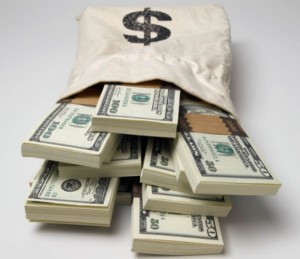
 The total value of capital imported into Nigeria in the third quarter of 2016 was estimated to be $1,822.12 million, which represents an increase of 74.84% relative to the second quarter, and a fall of 33.70% relative to the third quarter of 2015.
The total value of capital imported into Nigeria in the third quarter of 2016 was estimated to be $1,822.12 million, which represents an increase of 74.84% relative to the second quarter, and a fall of 33.70% relative to the third quarter of 2015.
In the latest report just released by the National Bureau of Statistics(NBS) and made available to Economic Confidential in Abuja, the highest level of capital imported was in August, when $894.00 million was imported, representing the peak since July 2015.
As at September this year, $649.76 million was imported, which was still more than any month in the first and second quarters. In contrast with the previous quarter, where Other Loans explained the majority of the increase, a number of investment types contributed to the quarterly increase.
According to the report, much of the quarterly increase in the value of capital importation came from debt financing. Of the total quarterly increase, 85% was accounted for by increases in Portfolio investment in Bonds and Money Market Instruments; the latter of which comprises short-term funding securities such as treasury bills and commercial bills from CBN.
The report further showed that growth in FDI equity was also strong, although Portfolio equity continued to decline. FDI investments have a longer-term interest, and are therefore less likely to reflect short term challenges than Portfolio Equity.
Nevertheless, each type of investment (FDI, Portfolio and Other) recorded quarterly increases, of 84.84%, 172.84% and 7.80% respectively. The relatively strong growth in Portfolio Investment meant it regained its position as the largest investment type, and it accounted for 50.51% in the third quarter, compared to 18.69% and 30.80% for Other Investment and FDI respectively. Year on year growth rates remained negative; FDI,
Portfolio and Other Investment declined by 52.54%, 8.80% and 45.05% respectively compared to the third quarter of 2015. In the case of FDI and Other Investment however, this was partly the result of a base effect, as there was a spike in value of FDI Equity in the third quarter of 2015.
Nevertheless, it is also possible that the weaker growth in the economy in the first half of 2016 has had an impact on the value of capital importation.
Capital Importation can be divided into three main investment types: Foreign Direct Investment (FDI), Portfolio Investment and Other Investments, each comprising various sub-categories.
In the third quarter of 2016, Portfolio Investment was the largest component of imported capital and accounted for $920.32 million, or 50.51%. Although Portfolio Equity declined by 28.12% relative the previous quarter, this is outweighed by large increases in other types of Portfolio Investment. Bonds increased from zero in the second quarter, to $369.00 million in the third, and Money Market Instruments increased from $57.50 million to $350.20 million over the same period, an increase of 509.03%. This is the first quarter since 2007 Q2 in which Equity was not the largest part of Portfolio investment; at $201.12 million this type of Portfolio Investment remains considerably subdued relative to previous highs of $4930.55 million in the first quarter of 2013, and $3875.35 million in the second quarter of 2014.
